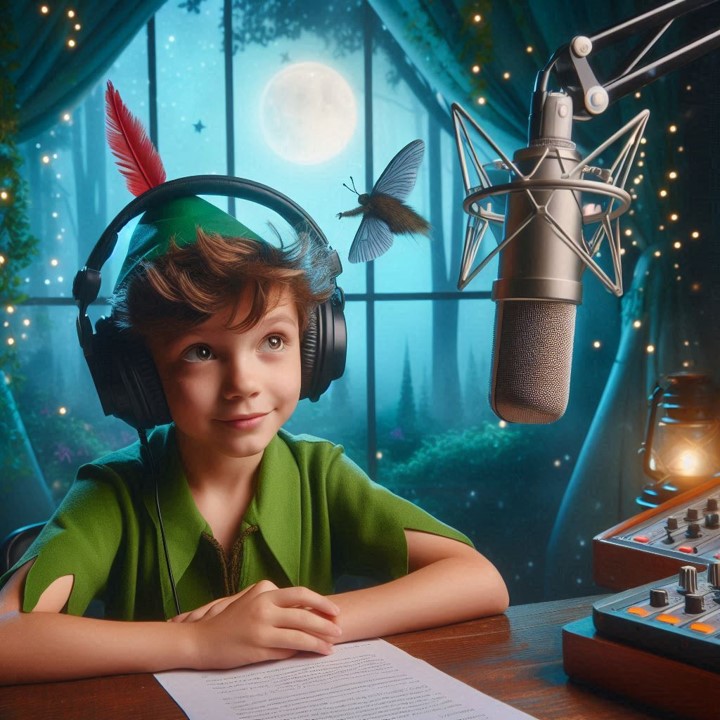
Our AQ6 study of radio air personalities on commercial radio stations closes tonight at midnight. I’m happy to tell you this year’s total sample is already ahead of what we aggregated last year. That’s a good sign. In an industry where the talent population has been shrinking for several years now, I’m encouraged by how many shows, hosts, and teams wanted to be counted and heard.
I’ll be heading out to San Diego in just over a week, attending Morning Show Boot Camp 36, the year’s annual gathering of pros who make their livings behind the mic. They’re a unique lot, too. While some have a pretty good idea of where their careers are headed, many others are trying to come to grips with whether they’ll be able to manage the requirements of life while continuing to pursue a career in the volatile radio industry.
Now I know some of you old-timers are thinking, “Fred, get real – radio’s always been a crazy business. It’s not all that different today.” But I would take exception to that. True, the industry has always been fickle and unpredictable. But it was always a healthy business where smart programming led to strong ratings which led to great sales. Today, that equation has been disrupted, making success more precarious.
And to underline that, once again in this year’s study, we even have a question about the elusive quest for a work:life balance. We’ll see how everybody’s navigating that lifestyle challenge. 
Another interesting angle about radio is that many on the air pride themselves on not growing up – maintaining a youthful outlook, profile, and yes, brand. It’s that old expression: “Radio keeps you young.” You might call it the “Peter Pan Effect” because some in our business prefer not to engage in what has become known as “adulting.”
I sometimes hear a manager lamenting that talent can be so immature or they won’t grow up. And I think, we pay people to do and say childish, irreverent things, do crazy stunts, and parody everything. Why would you think those same behaviors don’t carry over into real life. Trying to hermetically seal our fleeting youth is part of the radio bargain.
Truthfully, I can relate. My mother even used to call me Peter Pan, well into my thirties. For a time, I believe it was part of my persona. After all, when you hear “GROW UP!” enough times, you begin to think that’s part of who you are.
It shouldn’t escape any of us that even organizations like marketers continue to remind us we can pursue that fountain of youth, even while we age. I recently saw a feature on Christie Brinkley yesterday who gleefully declared, “70 is the new 40.” (It’s not – that’s voodoo math.)
And gracing the cover of AARP magazine this month is Jon Bon Jovi. (So, if that makes you feel a bit more decrepit, I get it.)
You know you’re old when the AARP Magazine has Jon Bon Jovi on it’s cover. #AARP pic.twitter.com/VzIakxXTWB
— Brett Coughlin (@CoughlinBrett) July 20, 2024
The fact is, I was not alone in my quest for lifelong adolescence, and neither are the millions of adults pushing back against the trappings of middle age, senior citizenry, and (gulp!) maturity. And to prove it, many actively enjoy doing “kid things” well into their “grown up” years. When I see 40+ adults having Halloween parties, it is an obvious attempt to co-opt what has traditionally been a kid’s night to celebrate, party, dress up, drink, and eat lots of candy.
Or take all those adults playing softball, pickleball, and other competitive sports decades after their little league careers ended. Others are putting together bands even though the last time they jammed in the basements or garages of their parents’ homes was back in high school.
 But here’s where “arrested development” might actually come in handy: the wonderful world of toys and games. These youthful endeavors make us feel younger, helping us escape from the pressures and realities of everyday life. They help us kill time while waiting at the dentist’s office, watching yet another kids’ soccer game or recital, or standing in line at the DMV.
But here’s where “arrested development” might actually come in handy: the wonderful world of toys and games. These youthful endeavors make us feel younger, helping us escape from the pressures and realities of everyday life. They help us kill time while waiting at the dentist’s office, watching yet another kids’ soccer game or recital, or standing in line at the DMV.
There’s also the nostalgic piece. In the same way Classic Rock (and other genres) takes us back to our pasts, so do games of all kinds that were part of the fabric of our childhoods.
They’ve also become big business. A recent story in RetailWire asks, “Will Adults Keep Buying Toys?” gives us a shocking fact: Adults 18 and older generated more revenue for toy sales than any other age group in the first four months of this year. Usually, it’s the preschool market that leads the demographic pack for toy sales, but not anymore.
It turns out the pandemic was a turning point, according to Circana, a company that keeps track of consumer spending and trends. They report that more than four in ten adults bought a toy for themselves during the past year. Why? For “personal fun, socialization, and collecting.”
In 2023, MGA Entertainment’s Miniverse conducted a study comprised of 2,000 Gen Zs and Millennials in the U.S. Here are some takeaways: Nearly, six in ten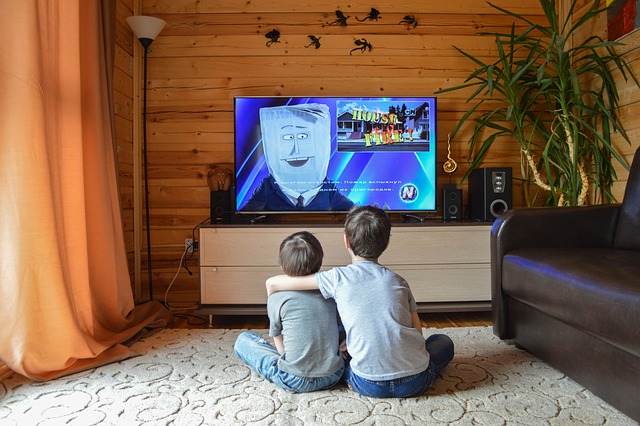 think of themselves as “kidults” (the new term for Peter Panners). And six in ten often rewatch movies from their childhoods, more than half watch cartoons. Finally, nearly half can recall products from their youth.
think of themselves as “kidults” (the new term for Peter Panners). And six in ten often rewatch movies from their childhoods, more than half watch cartoons. Finally, nearly half can recall products from their youth.
And then there’s games. Perhaps no legacy media brand understand their appeal better than the New York Times. In fact, their “Games” subscription vertical includes the wildly popular Wordle and their “Games” app was downloaded more than 10 million times last year.
As Jonathan Knight, the Times’ Head of Games wrote in a LinkedIn post this year, this amazing business has become an important means to an end for his company:

Who better to talk about the impact of games on mainstream media and technology brands than the Times. In a recent column by Mike Isaac, the story’s title advice was “Grab Them. Then Stump Them.”
We used to think about extending time spent listening with a team or by squeezing in an extra song. These days, the modern tactic is to use games to add consumers “and keep them coming back” is to use games as the incentive.
Isaac notes that both Apple and LinkedIn have integrated games and puzzles to grab consumer attention in a media world that is noisy and cluttered. Apple has integrated this element in their Apple News+ app (pictured), another indicator the major media brands perceive strong value and consumer engagement.
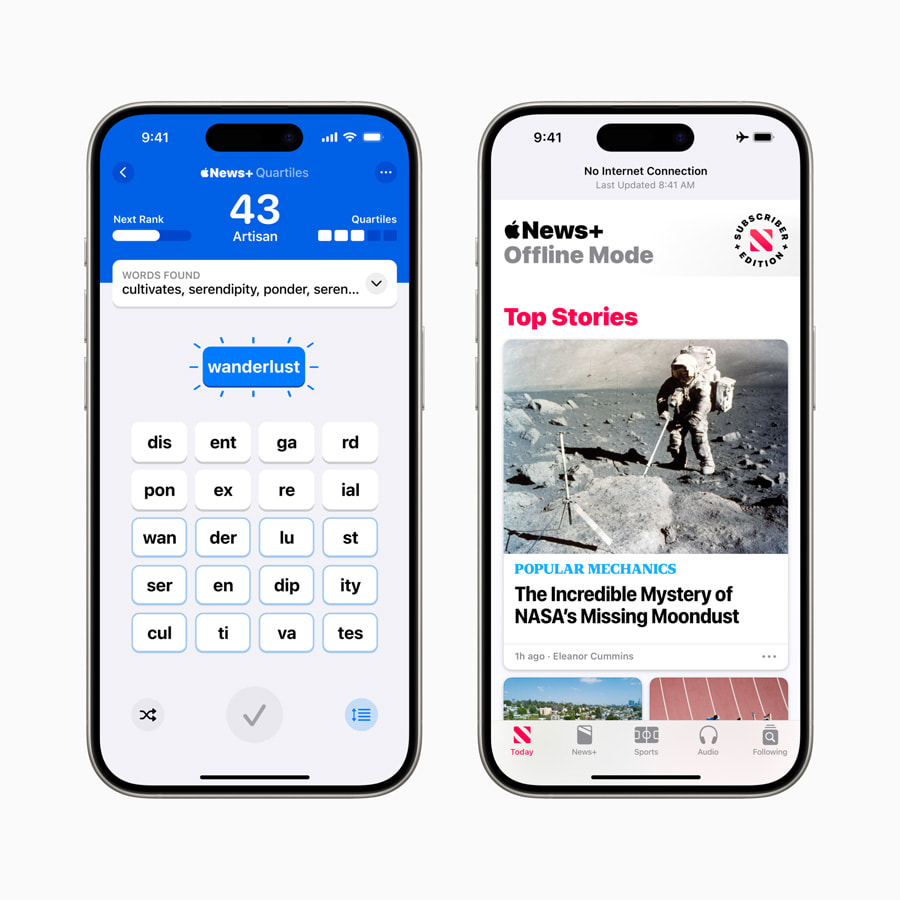
Photo: Apple
Oddly enough, radio hasn’t done much in the games arena, despite the fact some of the biggest promotional winners over the last few decades have emanated from contests that have a definite gaming component.
From “The Birthday Game” (Filmhouse’s signature campaign) to “Hi-Lo” to “Secret Sound,” radio has a long history of success using various game platforms and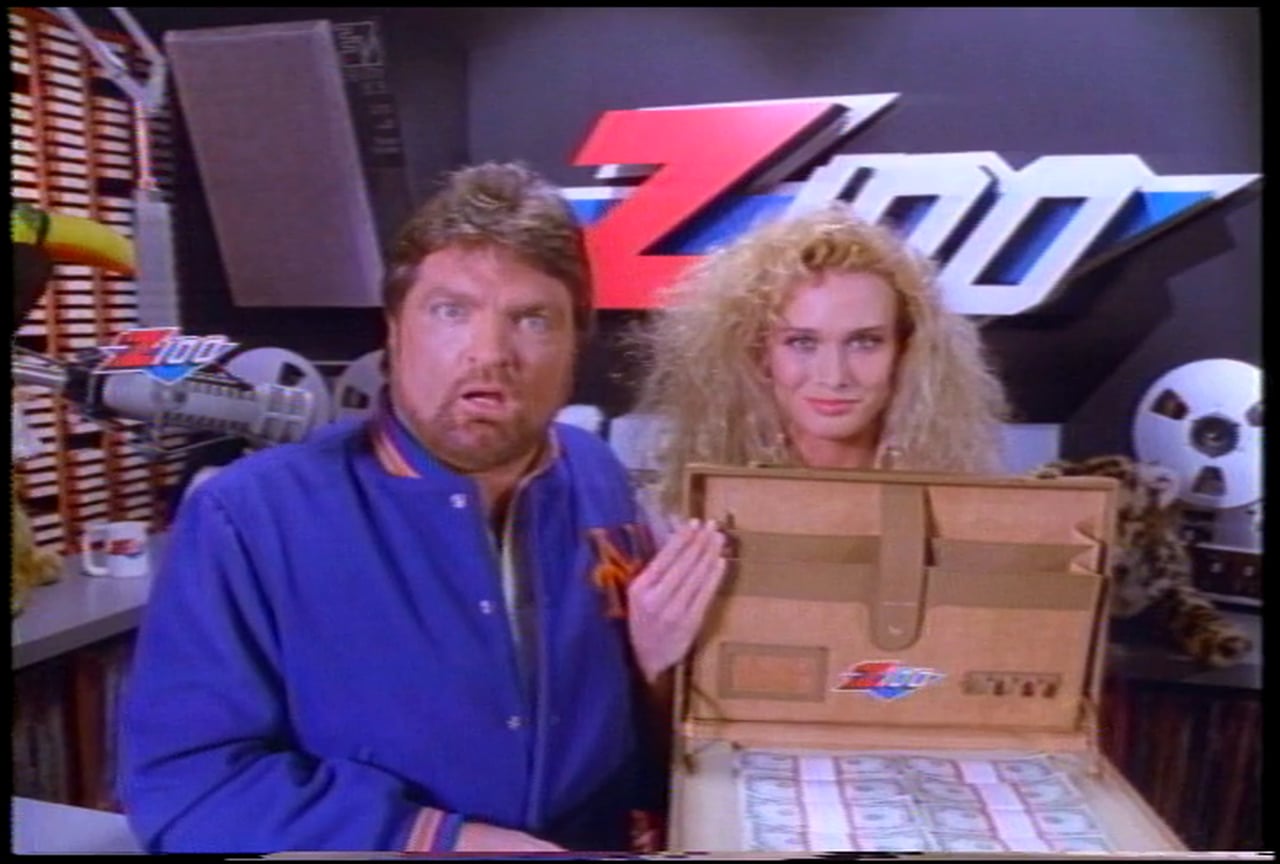 gimmicks.
gimmicks.
And programmers agree games can provide added value to consumers already using company platforms. The editor in chief of Apple News, Lauren Kern, says Apple News+, the subscription version of Apple News, concurs, saying games bring in paying customers.
The most educated radio listeners in America are core users of public radio stations. Jacobs Media has started asking respondents in our PRTS studies about their game play, and the responses are nothing short of spectacular:
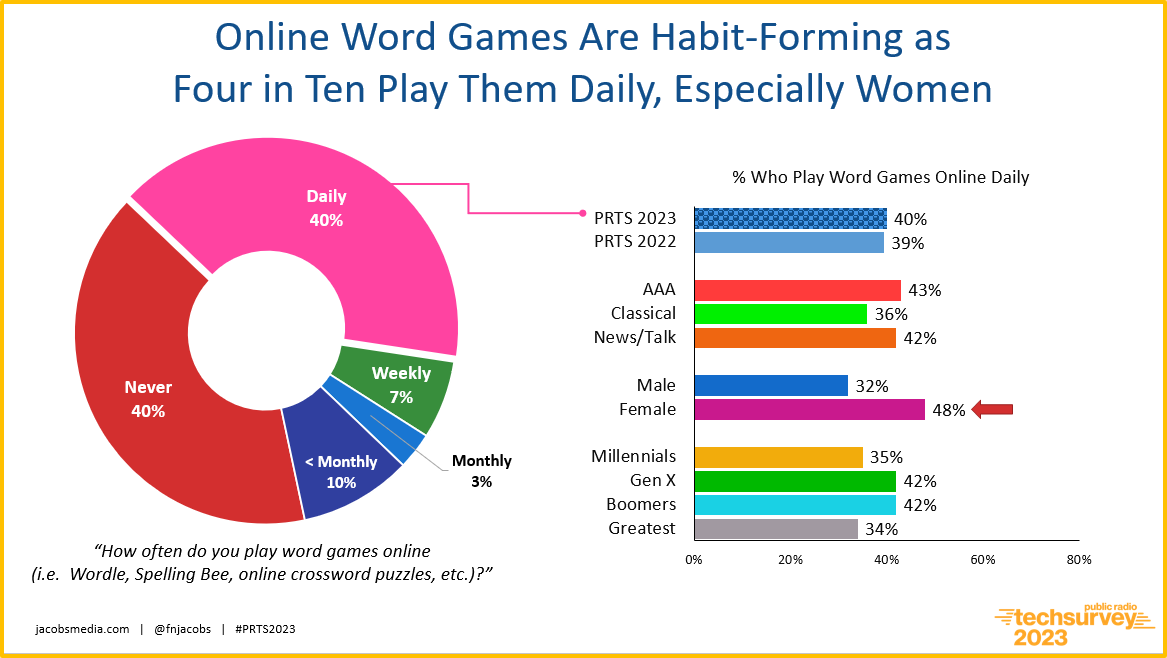
Twice as many core public radio fans play online games every day than listen to podcasts. Women especially find these games appealing. And when you consider the cost of developing a sustainable game versus launching a long-running podcast…I’ll let you do the math.
In radio, we often talk about playing “the ratings game.” Little did we know, the solution to winning it might be more obvious than we thought.
Game on.
Today’s the final day for your voice to be counted in this year’s AQ6 study all about commercial radio on-air talent in the US. If that’s you, take a few minutes to be heard in this exclusive survey for and about radio personalities. It’s here.
Originally published by Jacobs Media








